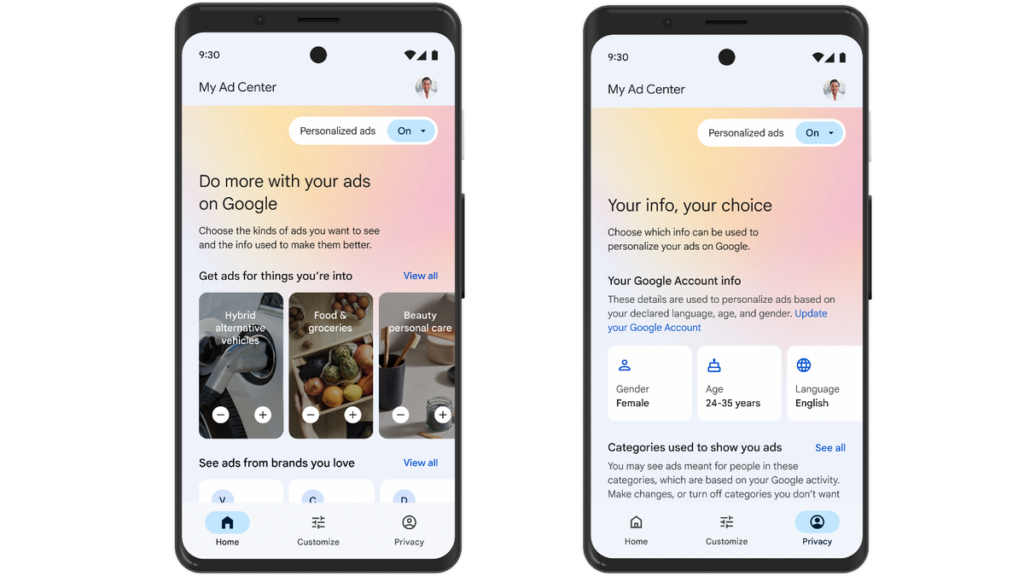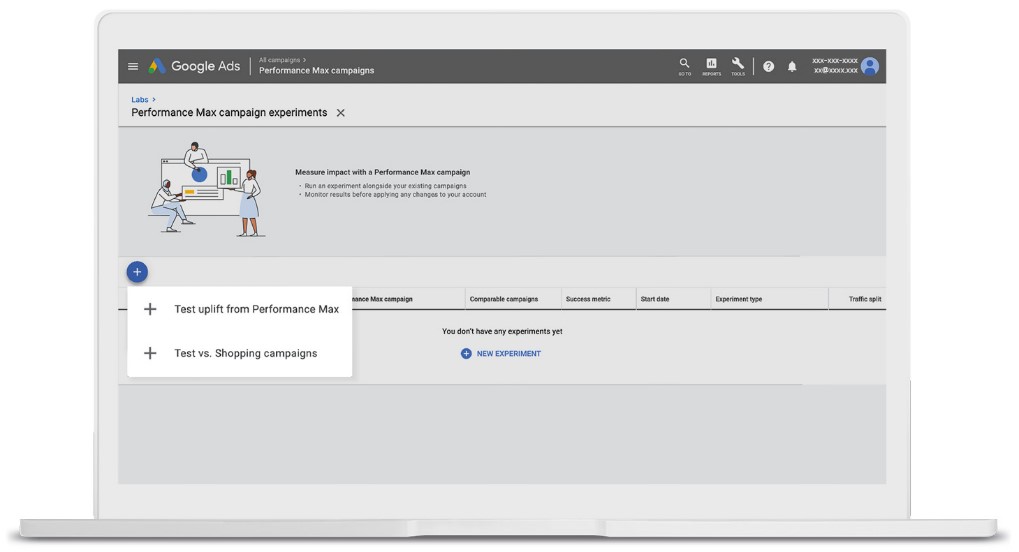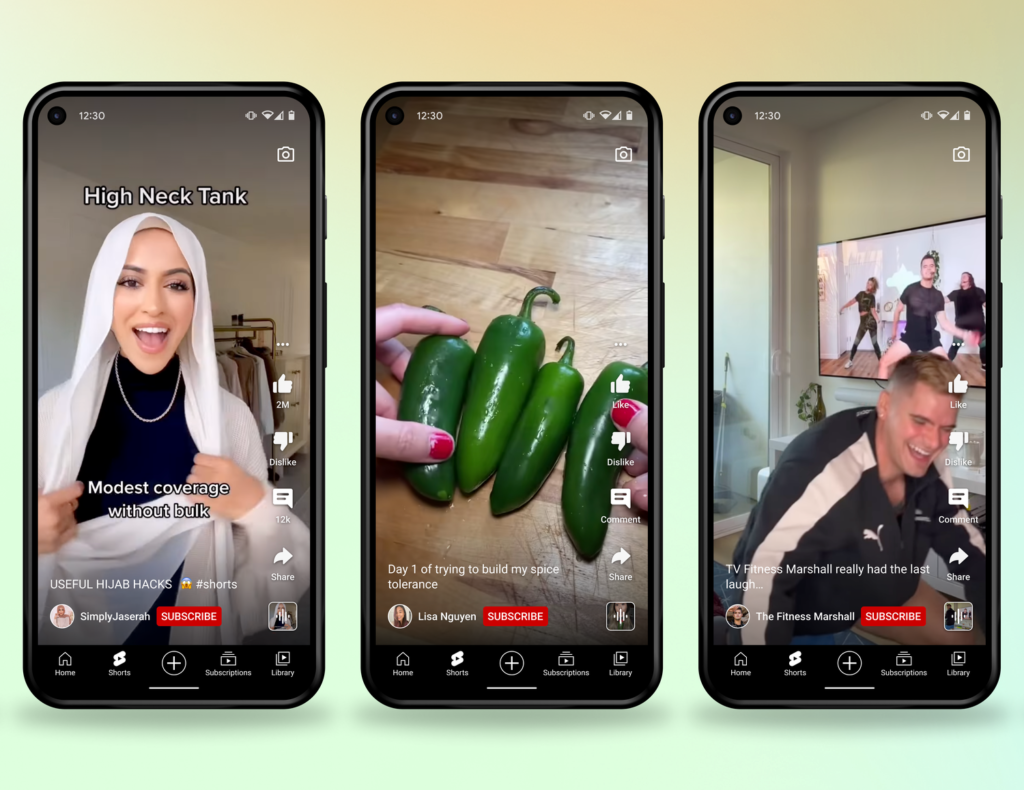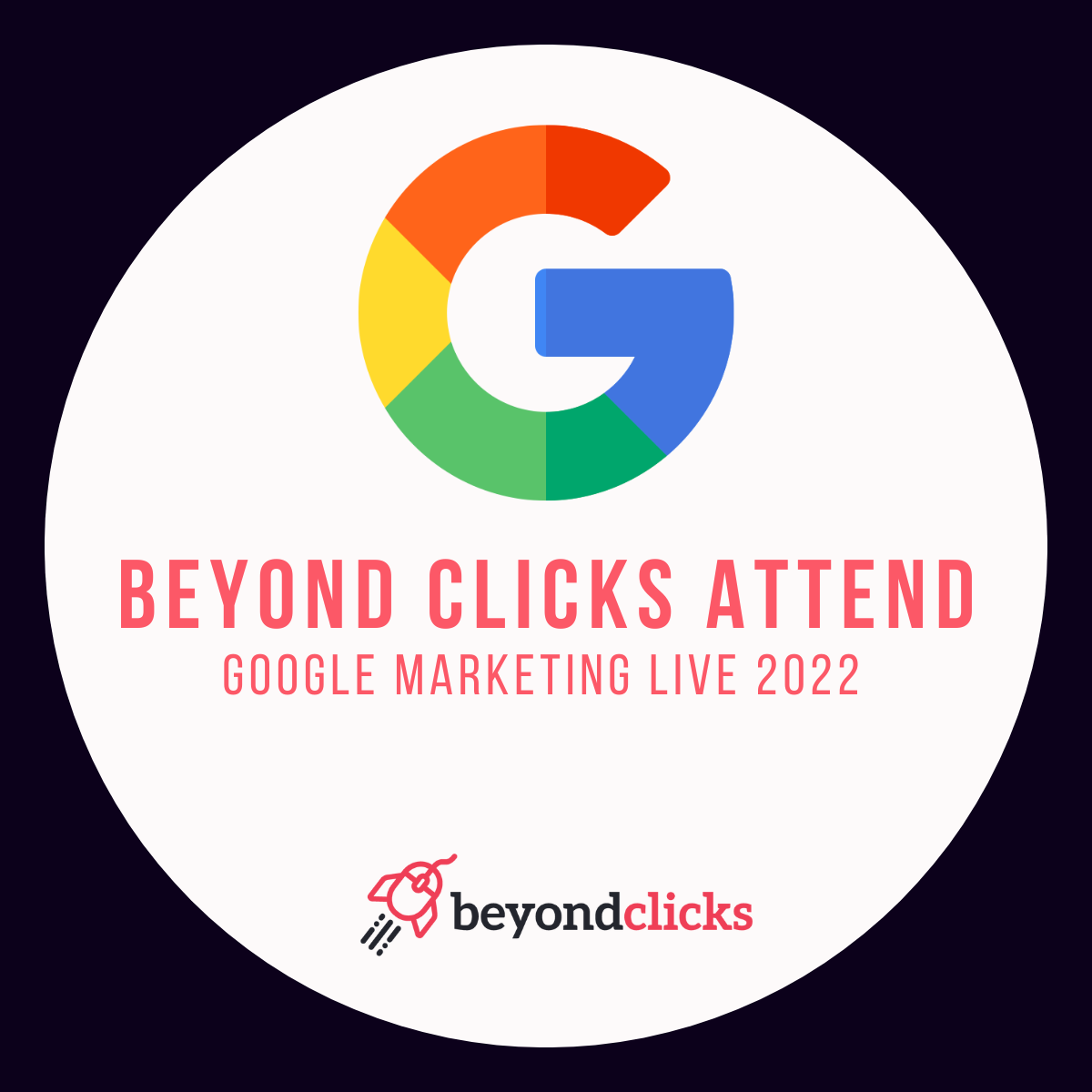Beyond Clicks were delighted to attend this years Google Marketing Live event in Zurich and discovered a wealth of exciting innovations coming from Google in 2022.
Here, we share our key takeaways we consider important to helping our clients navigate the upcoming changes to the digital environment.
Google claims that ‘Technology is powering more business growth around the world than ever before’ and have responded to these changes to meet and enhance consumer needs and behaviour.
We are on the cusp of the next digital revolution. Google compared this change to when the internet was first launched with the addition of growth on mobile devices.
In short, this year’s event focused on 3 key topics:
- Building Resilience for the Future
- Driving Results
- Reimagine what is possible
Building Resilience For The Future:
Privacy:
With the imminent migration into a ‘cookie less world’ Google are heavily focused on building tools advertisers can trust without third party cookies.
Their ‘Privacy Sandbox’ is currently in development which will phase out third party cookies and limit covert tracking. This is due to be released later in 2022.
Google are introducing a full suite of privacy safe elements:
My Ads Center allows Google users to preselect which brands/topics they like as well as selecting a level of personalisation for their ad customisation. Using simple controls, users can input their age, relationship status, education and demographic data directly into their profile. It is also possible to opt out of certain topics such as weight loss, pregnancy, gambling, alcohol.

Expanded Controls within ads: User needs change regularly so having a set profile may not be the solution for everyone. Google will now enable users to block, like or report an ad or select whether they wish to see more/less of this type of ad. For transparency, it is also possible to see who paid for the ad to understand why it has been served.
Enhanced conversions were introduced last year however, as we migrate into a cookie less world, Google have made improvements to prioritise data privacy. As we begin to lose visibility on users, it is more important than ever to ensure you are attributing your campaigns correctly.
Enhanced conversions work by collecting first party data from your website. (Customers entering contact information name, email, telephone number) which is then aggregated and transmitted in hashed form. This ensures a privacy safe connection between your leads and your performance via offline conversion imports, regardless of device. The hashed data is then matched against Google users and will be reported within your Google account. This works when a user has logged into their Google account before engaging with your ad.
Driving Results:
Updated Reporting
Google Tags – The existing global site tag will be replaced to simplify and track users more easily without the need for additional code. This new code will be used across Google Analytics and Google Ads eliminating the need to combine, import or manage tag settings.

Search & Conversion Lift Tests: Using machine learning and automation, Google can run search and conversion lift tasks including geo experiements directly available in Google Ads and in Video Display and 360. Essentially this means we can now distinguish between audiences who have or haven’t seen YouTube ads which will clearly identify organic uplift from YouTube campaigns.
Trust in Automation: More transparency
Performance max was a large focus at this year’s Marketing Live Event. Initially launched last year, Google were excited to introduce improvements to Performance Max campaigns.
What is Performance Max?
Performance Max allows a single campaign to be rolled out across the entire Google eco-system.
Google states that advertisers deliver up to +13% more total incremental conversions with this campaign type however advertisers have always been concerned about maintaining manual control of their campaigns.
In answer, Google has introduced the capability of using experiment tools to drive results and A/B test to show incremental uplift in results of performance max campaigns. This will provide a one stop shop to report on data across all campaigns within the Google Ads interface.
Performance Max will also include Google Ads recommendations and optimisation score very soon which will make recommendations based on your goals, budgets, target audience as well as external search volumes and popular trends.

It was also announced that performance max campaigns will now be available ‘on the go’ via the mobile app as well as in Search ads 360 allowing users to report, create and manage Performance Max campaigns as they do within Google Ads.
Updates to Insights Page
New insights will also be available on your Google Ads Insights page to identify additional marketing opportunities and provide added context over performance.
This will allow you to focus on real time trends in customer behaviour and is uniquely tailored to your business. From here, you can use first party data to build out your business’ insights page.
Soon, it will also be possible to run search and conversion lift tests and more options on reporting via:
- Attribution Insights – understand your customers conversion journey across all campaigns including display, YouTube, shopping, Gmail and search.
- Budget Insights – Improve monthly forecasting using Google’s budget optimisation recommendations to utilise client budgets to its full potential.
- Audience Insights – Optimise campaign performance using first party data so you can assess which audience segments are performing best.
‘Innovations in search’ – Broad Match Testing
There is much debate relating to Google’s recent recommendation to upgrade phrase and exact match keywords to broad match. However, Google claims Advertisers that switch their exact match keywords to broad match in Target ROAS campaigns can see 20% more conversion value (Google Internal Data, July 2021).
The shift in automation (smart bidding) certainly implies that this will be the future however it is important to understand how this will affect your search campaigns.
The good news is that we can now test this theory via the recommendations page within your Google account:
Google has introduced a one click experiment set up, automatically enabling advertisers to test broad match keywords with smart bidding. You can now create a control campaign (existing) vs experiment (all exact and phrase match keywords upgraded to broad match).
Google recommends running this experiment for at least a 4-week period.
Please note that if search volume is lower, it could take longer to see results. It is also possible to run multiple experiments at one time.
Reimagine What is Possible
Visual Search is the Future
Consumers are interested in visual rich content. When a consumer see’s an item of interest, they want more information, and they want it now. The intent is immediate and now Google can respond in a totally new way using machine learning, text and images.
This will increase the need to include image extensions wherever possible for your Google search campaigns.
Later in 2022, Multi Search will be introduced. This innovation means users can download the Google Lens App on their mobile device and click the camera icon, point it at anything and it will search Google for the item!
The search results will then be displayed. You can overlay your visual search with keywords or can even ask questions about the item or refine your search by colour or brand.
Multi Search works in line with future privacy rules to ensure you are browsing safely and retain more control over the ads you see.
Google search results will also start to include a lot more images.
Click here for more information on Multisearch. [Credit. Google Ads Help 2022]
Video Innovations:
Online video is growing. Not only are people using YouTube more and more, but they are also viewing ads via connected TVs.
As a result, Google have been testing video ads in Google Discover to provide a more interactive way of engaging with brands. Google will gradually roll out YouTube Shorts as a solution to increase video/brand visualisation, across every device.
YouTube Shorts are similar to Instagram reels and allow creative freedom for advertisers.
Find out more on YouTube Shorts by reading our blog.

Asset Library
Advertisers will also be encouraged to utilise the asset library within Google Ads. Advertisers can upload their entire creative collections to the asset library (also compatible with Google Drive).
This is a huge time saver when creating ads as they are all in one place. Currently the asset library supports image files however with the increase in online video content, these capabilities will be made available in the very near future and advertisers can create new videos in seconds directly from their asset library.
In conclusion, Google are introducing multiple upgrades to their technology and services this year. We are interested to see how these innovations pan out and as always will be at the forefront of these developments, improving our knowledge, understanding and continuing to deliver to our clients.
For any additional information on any of these points, feel free to get in touch with the team.
